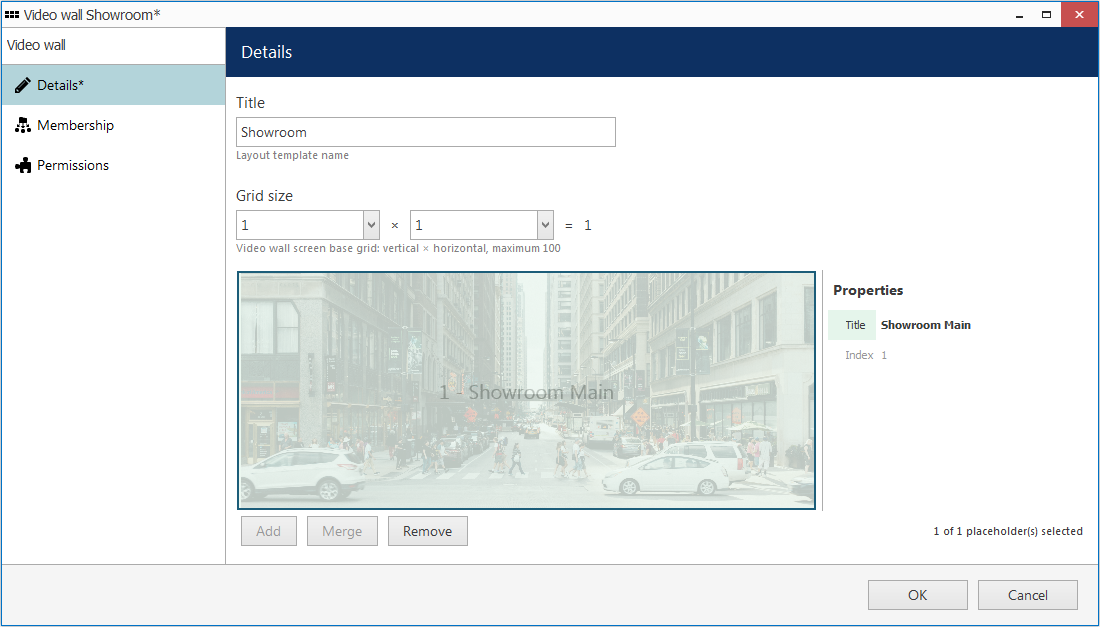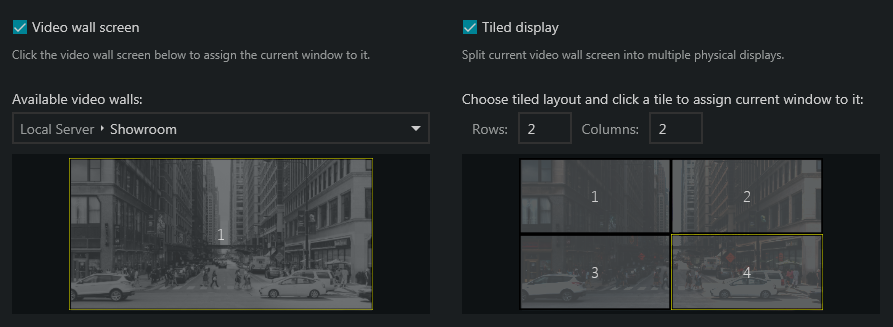Video Wall Magic: Displays Unite
Whenever people talk about CCTV, one of the first associations is video walls. No matter how powerful the servers behind, it is the visual that produces the "wow" effect — even on the most tech-savvy customers. Yet, they often back off, having heard the price. And this is where all EVO Global customers clearly benefit: our video wall has just got a major enhancement, and it does not cost you a penny.
Video walls are widely used everywhere from airports to rock concerts. Traditionally, in CCTV their application includes, but is not limited to, showrooms and control centers. To build a video wall, you take narrow bezel monitors, projectors, or TV sets, and tile them together. Depending on the goal, some or all of them may form one huge screen. This resulting "transformer" display is much better rather than just one large display: it offers customizable shape and size, distributed processing, and superior reliability.
Typically, you would employ additional technologies to make several output devices work as one. EVO Global allows casting a single picture onto a combination of displays from separate workstations. Most importantly: without anything other than just regular Windows display management.
Fantastic Flexibility
Video walls have been available in EVO Global since its very first versions. So what's different now?
Earlier, we already saw how the Luxriot virtual video wall helps organize collections of displays, including those in different locations. Now, EVO Global offers another option: mosaic display, or, according to a customer, "the real video wall". Previously, you could have a virtual collection of screens, scattered across the place, managed from your office. From now on, EVO Global also gives you an opportunity to combine several local screens into one. Both approaches fit into the video wall definition, yet they have different use case scenarios. And, both retain EVO's convenient and flexible management instruments.
In other words, EVO now acts as your video wall controller — no middleware required. The displays may be independent, maybe even driven by different workstations. But, in EVO they behave as a single canvas. Clever algorithms ensure full synchronization between the screens, guaranteeing zero delays.
Such architecture provides notable flexibility. Not only can you re-arrange the displays or add new ones at any point, but you also are free to use variegated hardware. This is true for both workstations and display brands. While a consistent video wall solution looks best on homogenous LCD/LED panel sets, a temporary replacement or a quick demo set-up becomes a piece of cake.
As you would expect, the rest of EVO Global video wall functionality remains the same. Once configured, any video wall screen contents can be controlled from anywhere in the universe.
Smooth Setup
Let's consider a use case.
Four display panels tiled contiguously, driven by two workstations. The task for EVO will be to display one high-resolution picture using all four screens. Simultaneously, an extra display in the operator's room should preview the same layout.
Briefly, the plan is: create a video wall, install clients, assign client displays to the video wall screens.

Add a single screen video wall in EVO Console
Detailed Description
Step 1: in your EVO Console, add a new video wall. For the current setup, the wall layout will be simply one screen, 1x1 grid. We shall use the same video wall screen for both the showroom and the operator's room.
Step 2: install EVO Monitor on all client workstations. The client application does not require a license, and you can use either 32- or 64-bit packages. Each application instance may have one or several windows. Therefore, the four panels can be split between two, three, or four workstations. Let's assume we have two client PCs here, each driving two displays.
Step 3: link physical displays to video wall screens. In this case, we have only got a single video wall screen, and we shall use it twice.
First, in the showroom, all 2x2 displays will belong to the video wall screen with a "tiled" option. To do this, open the multi-display settings, select a window, tick the Video wall screen setting, then also tick the Tiled display option on the right. In the mosaic preview, enter the grid size and then select the part of the big screen that is occupied by the underlying physical display.
Second, in the operator's room, simply point the monitor to the same video wall screen, without selecting the "tiled" setting. As a result, the same output will be produced on a single preview display.

Create a tiled video wall in EVO Monitor via multi-display setup
Step 4: have fun managing the video wall remotely or with E&A. For manual remote administration, there is a separate tab in the EVO Monitor application called — who would have thought? — Video wall. To start, drag and drop your video wall from the Resources section on the left. And then, place the desired layouts, channels and maps onto the preview area below. All adjustments will take instant effect and you will notice the changes in both rooms. Don't forget to save the current layout as startup by clicking the "three stripes" button in the upper right corner of the preview area.
Tips & Tricks
To make the most out of the tiled video wall, remember a few aspects:
- make sure the video cards meet the hardware requirements for EVO Monitor
- calibrate your displays to match the brightness and color settings
- use displays with the same aspect ratio and resolution
- choose displays with the near-zero bezel (frame) and minimize the gap between them
Bountiful Benefits
EVO Global video wall feature is a strikingly simple yet powerful solution for anyone. All the more, we are proud to present the "stretchy" video wall option as a further advantage.
- Feel free to experiment with any size or shape, and re-build your video wall at any time. Any alterations to the original layout only need a few fine-tune clicks on the client side.
- The feature is already included with your EVO Global license - no additional costs involved.
- On top of that, the EVO Global video wall does not have strict requirements for the used display type. You do not have to stick to a particular brand, never mention additional software or hardware drivers. This also means you can start with the existing infrastructure, and the final solution may implore little or no extra investments at all.
- Easy setup and re-configuration. In case of any trouble, our engineers are always there to assist!
- EVO Global redundancy covers for video walls, too, — have you set up your mirroring server?
- Control your video walls remotely from anywhere in the world. All changes are effective immediately. For routine scenarios, use our advanced Event & Action management: any video wall contents will pop up and disappear automatically.
Now, why don't you go and try this magic out?


